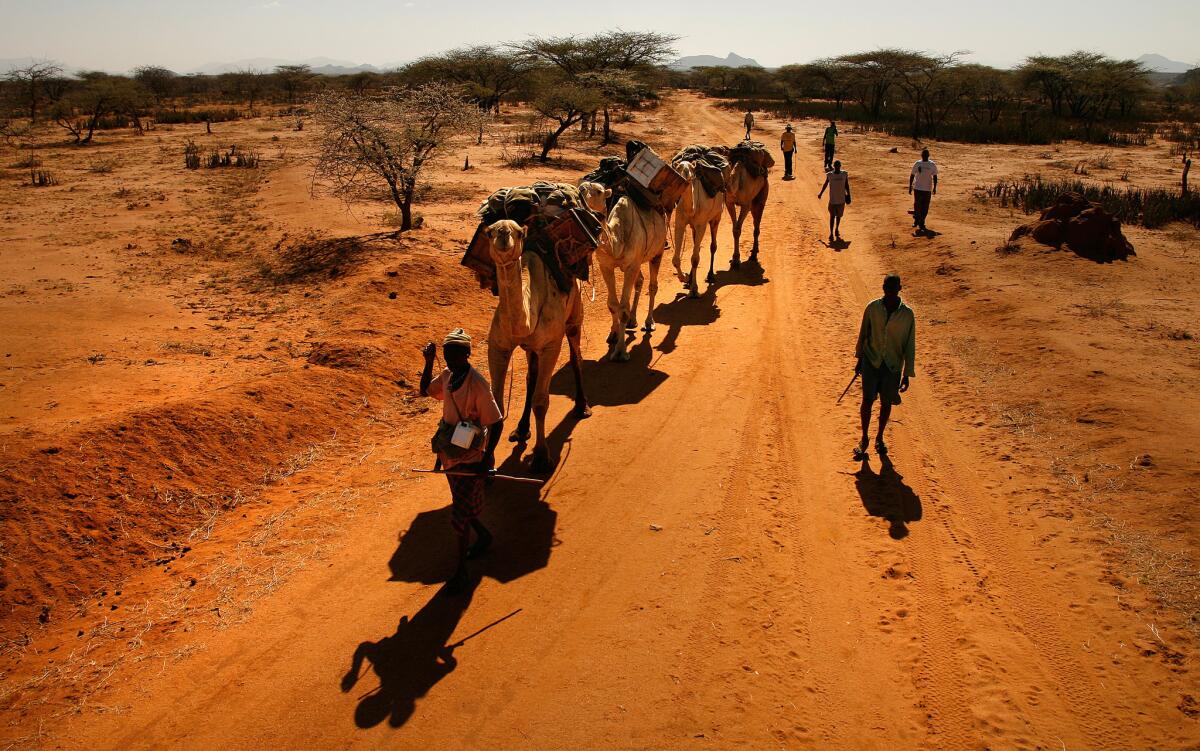Opinion: Scientists suggest fertility control as a way to combat climate change. Now that’s alarming

Thousands of scientists around the world joined together last month to label climate change the “emergency” that it is. But one of the main points they make — linking control of women’s reproduction to environmental goals — is problematic. Focusing on what women in poor nations with the highest birth rates can do to curb climate change distracts from holding wealthy countries and corporations accountable for their disproportionate harm to the planet and imperils the right to reproductive autonomy.
The paper, “World Scientists’ Warning of a Climate Emergency,” was published in early November on the 40th anniversary of the first world climate conference. It rightfully warns of “untold suffering” without “major transformations in the ways our global society functions.”
Reducing population growth is one of six steps the authors say would slow carbon dioxide emissions. They also argue that to decrease the birthrate, family planning services and primary and secondary education need to be more available and accessible.
The group’s website goes a big step further. It says families must be encouraged to have fewer children and sounds the overpopulation alarm. A startling graph shows a dramatic world population spike beginning in the 19th century. The accompanying text refers to people giving birth as “adding more carbon emitters to the planet.” This presents a troubling and unfair picture and promotes the scapegoating of women.
Access to family planning and education are essential to gender equity and must be fiercely promoted in their own right. But arguing that they are an instrument against climate change implies that the most disenfranchised have an outsize role to play in the fight because of higher birth rates, when in reality they contribute very little to greenhouse gas emissions.
High- and upper-middle-income countries have higher per-capita emissions and account for 86% of global carbon emissions, despite having the lowest fertility rates. And even though some observers argue economic development will lead to higher per-capita carbon emissions from poor countries in the future, the global scientific and policy communities’ response should be laser-focused on bold systemic changes, such as restraining the use of fossil fuels, rather than persuading people to have fewer children.
Emphasizing population reduction as a response to global warming is also problematic because it may provide a perverse incentive for family planning services to lose sight of people’s right to make their own decisions about contraception and childbearing. The scientists’ warning rightly says that family planning programs should be voluntary and ethical, but those concepts can start to blur when women’s choices are put in competition with the future of the planet.
Historically, population growth alarmism coupled with eugenic ideas about who is worthy of reproducing has led to a painful global legacy of coercion and abuse — including, most prominently, cases of forced sterilization in India and China’s one-child policy.
Such blatant examples have been less common in the years since the landmark 1994 International Conference on Population and Development marked a shift away from population control toward protecting reproductive health and rights. However, those ideas haven’t died. Just four years ago, Stanford University biologist Paul Ehrlich, who wrote the 1968 book “The Population Bomb,” said he would endorse “various forms of coercion” to keep people from having more children.
An inherent and unresolvable tension remains between viewing family planning as a tool to mitigate climate change and valuing an individual’s right to choose to have a child.
Framing family planning as a means to an end — especially when the “end” is as urgent and important as slowing climate change — could lead anxious policymakers and healthcare providers focused on reducing population to push contraceptive methods that are considered more effective, without regard for a woman’s needs and preferences. It could also lead them to be less likely to make sure women are able to have provider-controlled methods — such as intrauterine devices or contraceptive implants — removed on demand.
Curbing climate change and making high-quality, rights-based contraception and abortion services accessible to those who want them are both urgent issues that deserve attention and resources.
However, the misplaced emphasis on poor women’s reproduction risks sacrificing human rights to chip away at climate change, a massive problem that needs transformational solutions. And it also distracts from the fact that poor communities are the least likely to have the resources to mitigate the devastating impact of climate change on their lives and livelihoods, and thus have the most to lose. Even if women in poor countries stopped having children tomorrow, without massive decarbonization of the economy neither the planet nor their lives will be any better off now or in the future.
As climate-change scientists continue to push the world toward urgent action, they should avoid family planning as a solution. Instead, they can follow the lead of the climate justice movement and promote a human-rights-based approach that holds governments and businesses accountable for reducing reliance on fossil fuels — and for mitigating the disproportionate burden borne by the most poor and disenfranchised. A bold vision for tackling the climate emergency requires nothing less.
Kelsey Holt is a social and behavioral scientist and researcher with the Person-Centered Reproductive Health Program at UC San Francisco.
More to Read
A cure for the common opinion
Get thought-provoking perspectives with our weekly newsletter.
You may occasionally receive promotional content from the Los Angeles Times.










